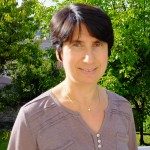Link to Pubmed [PMID] – 2007407
Eur J Biochem 1991 Mar; 196(2): 469-74
A truncated Bordetella pertussis cya gene product was expressed in Escherichia coli and purified by affinity chromatography on calmodulin-agarose. Trypsin cleavage of the 432-residue recombinant protein (Mr = 46,659) generated two fragments of 28 kDa and 19 kDa. These fragments, each containing a single Trp residue, were purified and analyzed for their catalytic and calmodulin-binding properties. The 28-kDa peptide, corresponding to the N-terminal domain of the recombinant adenylate cyclase, exhibited very low catalytic activity, and was still able to bind calmodulin weakly, as evidenced by using a fluorescent derivative of the activator protein. The 19-kDa peptide, corresponding to the C-terminal domain of the recombinant adenylate cyclase, interacted only with calmodulin as indicated by a shift in its intrinsic fluorescence emission spectrum or by the enhancement of fluorescence of dansyl-calmodulin. T28 and T19 fragments exhibited an increased sensitivity to denaturation by urea as compared to uncleaved adenylate cyclase, suggesting that interactive contacts between ordered portions of T28 and T19 in the intact protein participate both in their own stabilization and in stabilization of the whole tertiary structure. The two fragments reassociated into a highly active calmodulin-dependent species. Reassociation was enhanced by calmodulin itself, which ‘trapped’ the two complementary peptides into a stable, native-like, ternary complex, which shows similar catalytic properties to intact adenylate cyclase.
